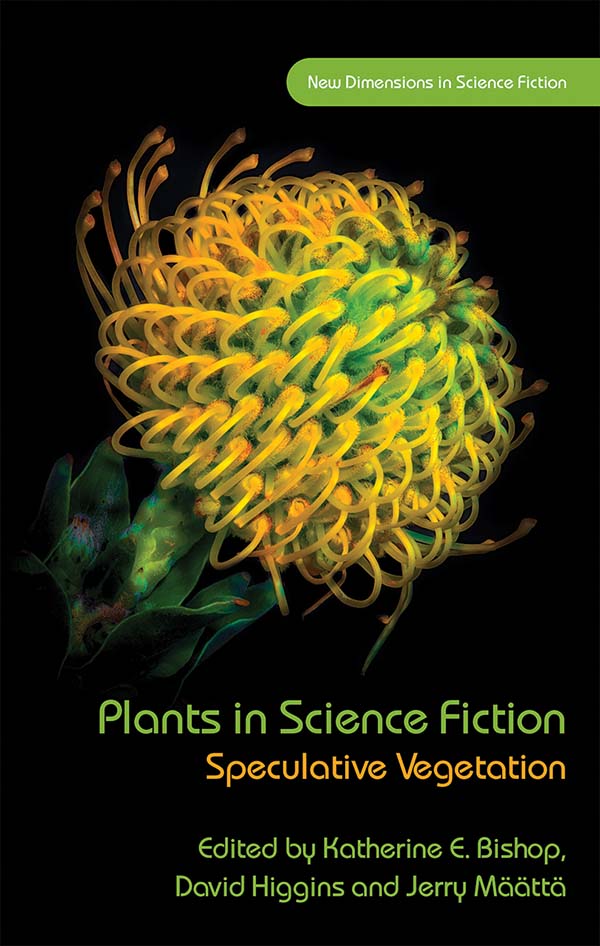Plants in Science Fiction
Speculative Vegetation
Golygydd(ion) Katherine E. Bishop,David Higgins,Jerry Määttä
Iaith: Saesneg
Dosbarthiad(au): Literary Criticism
Cyfres: New Dimensions in Science Fiction
- Mai 2020 · 272 tudalen ·216x138mm
- · Clawr Caled - 9781786835598
- · eLyfr - pdf - 9781786835604
- · eLyfr - epub - 9781786835611
Plants have played key roles in science fiction novels, graphic novels and film. John Wyndham’s triffids, Algernon Blackwood’s willows and Han Kang’s sprouting woman are just a few examples. Plants surround us, sustain us, pique our imaginations and inhabit our metaphors – but in many ways they remain opaque. The scope of their alienation is as broad as their biodiversity. And yet, literary reflections of plant-life are driven, as are many threads of science fictional inquiry, by the concerns of today. Plants in Science Fiction is the first-ever collected volume on plants in science fiction, and its original essays argue that plant-life in SF is transforming our attitudes toward morality, politics, economics and cultural life at large – questioning and shifting our understandings of institutions, nations, borders and boundaries; erecting and dismantling new visions of utopian and dystopian futures.
Contributors
Introduction - Katherine E. Bishop
Abjection
Weird Flora: Plant Life in the Classic Weird Tale - Jessica George
‘Bloody unnatural brutes’: Anthropomorphism, Colonialism and the Return of the Repressed in John Wyndham’s The Day of the Triffids - Jerry Määttä
Botanical Tentacles and the Chthulucene- Shelley Saguaro
Affinity
Between the Living and the Dead: Vegetal Afterlives in Evgenii Iufit's and Vladimir Maslov’s Silver Heads - Brittany Roberts
Vegetable Love: Desire, Feeling, and Sexuality in Botanical Fiction - T. S. Miller
Alternative Reproduction: Plant-time and Human/Arboreal Assemblages in Holdstock and Han - Elizabeth Heckendorn Cook
Accord
Sunlight as a Photosynthetic Information Technology: Becoming Plant in Tom Robbins’s Jitterbug Perfume - Yogi Hale Hendlin
The Question of the Vegetal, the Animal, the Archive in Kathleen Ann Goonan’s Queen City Jazz - Graham J. Murphy
Queer Ingestions: Weird, Vegetative Bodies in Jeff VanderMeer’s Fiction - Alison Sperling
The Botanical Ekphrastic and Ecological Relocation - Katherine E. Bishop
Selected Bibliography
Index


